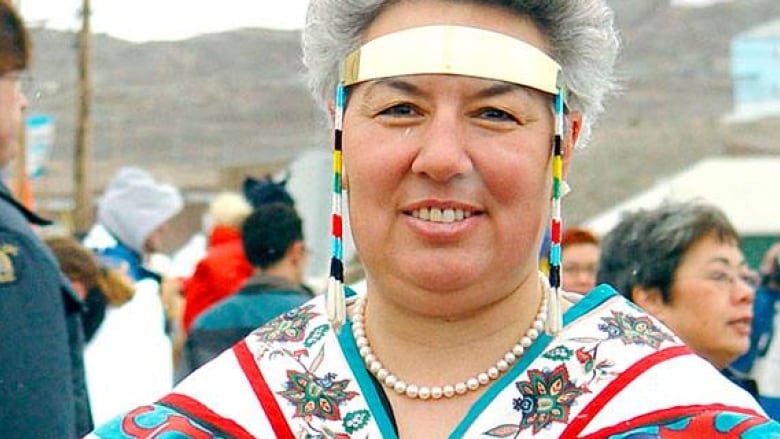Arctic Canada: Nunavut residents see progress, more work as territory turns 20

Twenty years ago, with northern lights and fireworks lighting up the sky, Nunavut became a territory. In Iqaluit on April 1, 1999, snowmobiles buzzed beside dog teams and a crowd watched the lights as they celebrated decades of work that had finally paid off.
For many, April 1 is a day to celebrate and recognize what it took to create Canada’s third territory. For some, it’s also a chance to look ahead at what is yet to come — including self-government.
For Aluki Kotierk, president of Nunavut Tunngavik Inc., reflection on the territory’s progress actually started last year — the 25th anniversary of the Nunavut Agreement.
Nunavut Tunngavik manages the implementation of the Nunavut Agreement — the country’s largest land claims agreement — which was signed July 9, 1993. The organization is now looking ahead, recently putting forth a motion at its annual general meeting to look at new ways to govern the territory.

“It’s very balanced. There’s some things that worked well and some things that haven’t worked well,” Kotierk said.
She said she’s pleased with how Nunavut’s co-management structures work and she’s seen growth.
“I think there’s been improvements, I think young Inuit in Nunavut have many more role models to look up to, and are able to see Inuit faces in so many areas,” she said.
“I think that’s a very positive thing.”
At the same time, she says some of the foundational reasons for creating Nunavut — to strengthen Inuit languages, to provide more opportunities to Inuit — are far from being realized.
New kind of self-government?
These concerns have given rise to a new movement within the organization to look at forms of self-government.
Article 4 of the Nunavut Agreement allows for Nunavut to be governed by a public government, which serves all people who live in the territory and operates much like any other provincial or territorial government.
“At the time the intention was that, given that the public majority is Inuit, that although it’s a public government, that there would be a focus on the public majority,” Kotierk said.
Nunavut is 85 per cent Inuit, so the organization and the agreement push for a representative workforce, but Inuit employment numbers in the government have been stagnant at around 50 per cent for years.
Watch the CBC News report on the day Nunavut was born:
“I think even Inuit employees, I dare say, feel frustrated when they work for the government of Nunavut, because even though they’re Inuk they’re working in a government system that might not recognize and appreciate and welcome Inuit worldviews or languages.”
The lack of improvement in Inuit employment, and a second attempt by the current government to push off deadlines for students to have bilingual Inuktut-English education, inspired the recent motion, Kotierk said.
In her view, Nunavut Tunngavik created the existing government with the land claim, but the government only consults the organization as a stakeholder, which is not sufficient.
While most MLAs are Inuit, as are many heads of government departments, Kotierk envisions a governing structure that has Inuit involved in the design of programs and prioritizes Inuit education, culture and language.
What that looks like is too early to say. She says the organization’s board will get an update on the preliminary research phase of the self-government project next year.
Looking back

Nunavut’s first female cabinet minister Manitok Thompson says she’s not sure about self-government, but thinks the territory may have outgrown its unique consensus-style government.
“It seemed like they never really debated the issue fully. There has to be a system where they can do that. And I think a party system will do that,” Thompson said.
As a minister, she held the education portfolio and the housing portfolio. Lack of housing was a problem before Nunavut was created and remains a crisis, she said.
But looking back, she sees the government coming into its own.
“I’m not disappointed, you know, because it takes a lot to build a government. It takes years to get to the point where it’s become very well-oiled machinery,” Thompson said.
“We’ve done good.”
Celebrating Nunavut Day
While Iqaluit will mark April 1, 2019 with fireworks, the Nunavut government has few other activities scheduled because so many recognize July 9, Nunavut Day, as the territory’s significant milestone.
Instead, the government is offering money to communities to commemorate throughout the year as they see fit.

Premier Joe Savikataaq recently announced the funding in the Legislature.
“We may not be where we thought we would, but we are so far from where we started. We are growing — in our capacities, from lessons learned, in our partnerships and from each other.”
Related stories from around the North:
Canada: No big shake-up in Nunavut budget, territorial Inuit org says, CBC News
Finland: Finnish gov pulls bill to ratify convention on Indigenous peoples’ rights, Yle News
Sweden: Calls for more Indigenous protection in Sweden on Sami national day, Radio Sweden
United States: Indigenous Peoples Day celebrated in Alaska, Alaska Public Media



